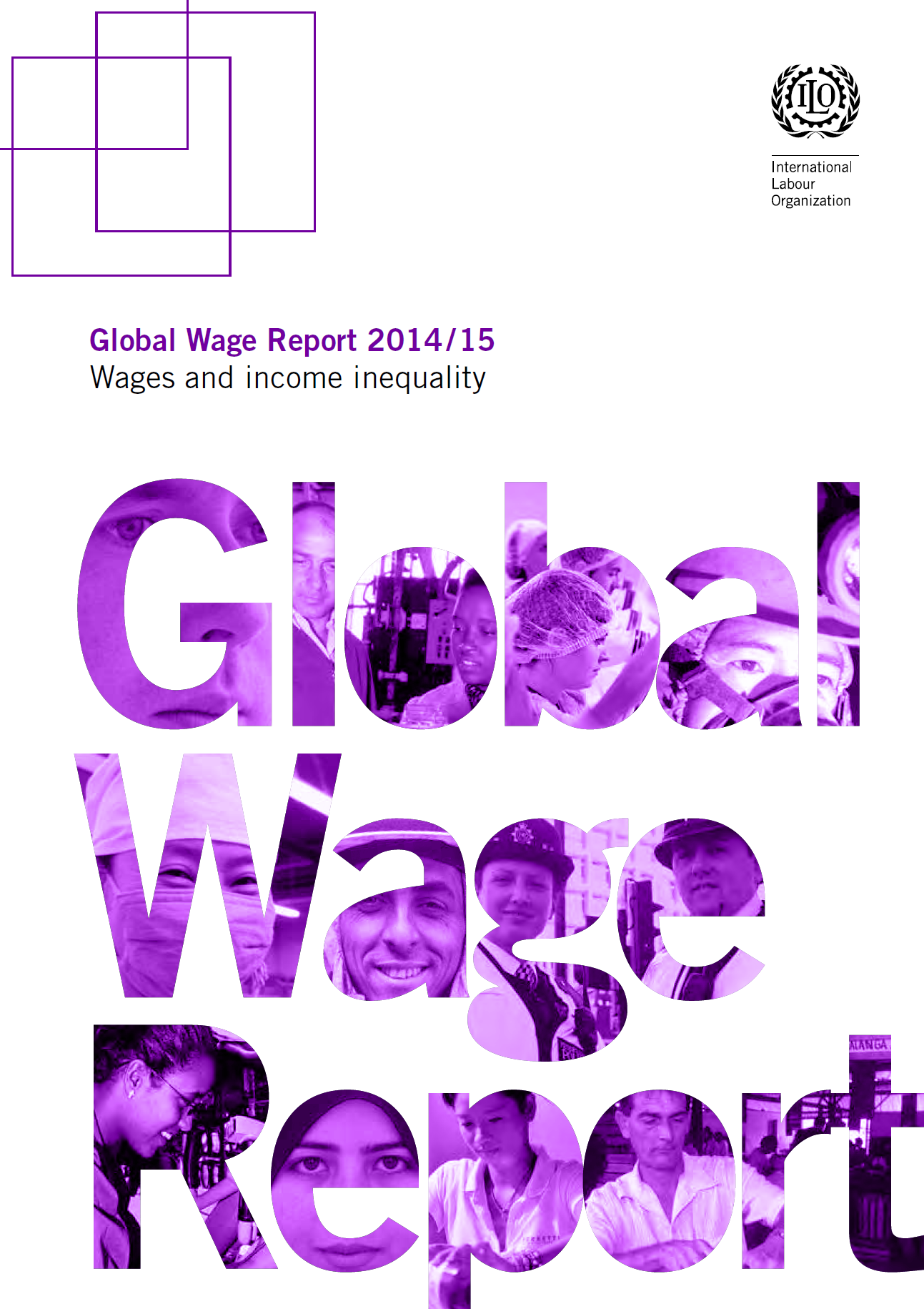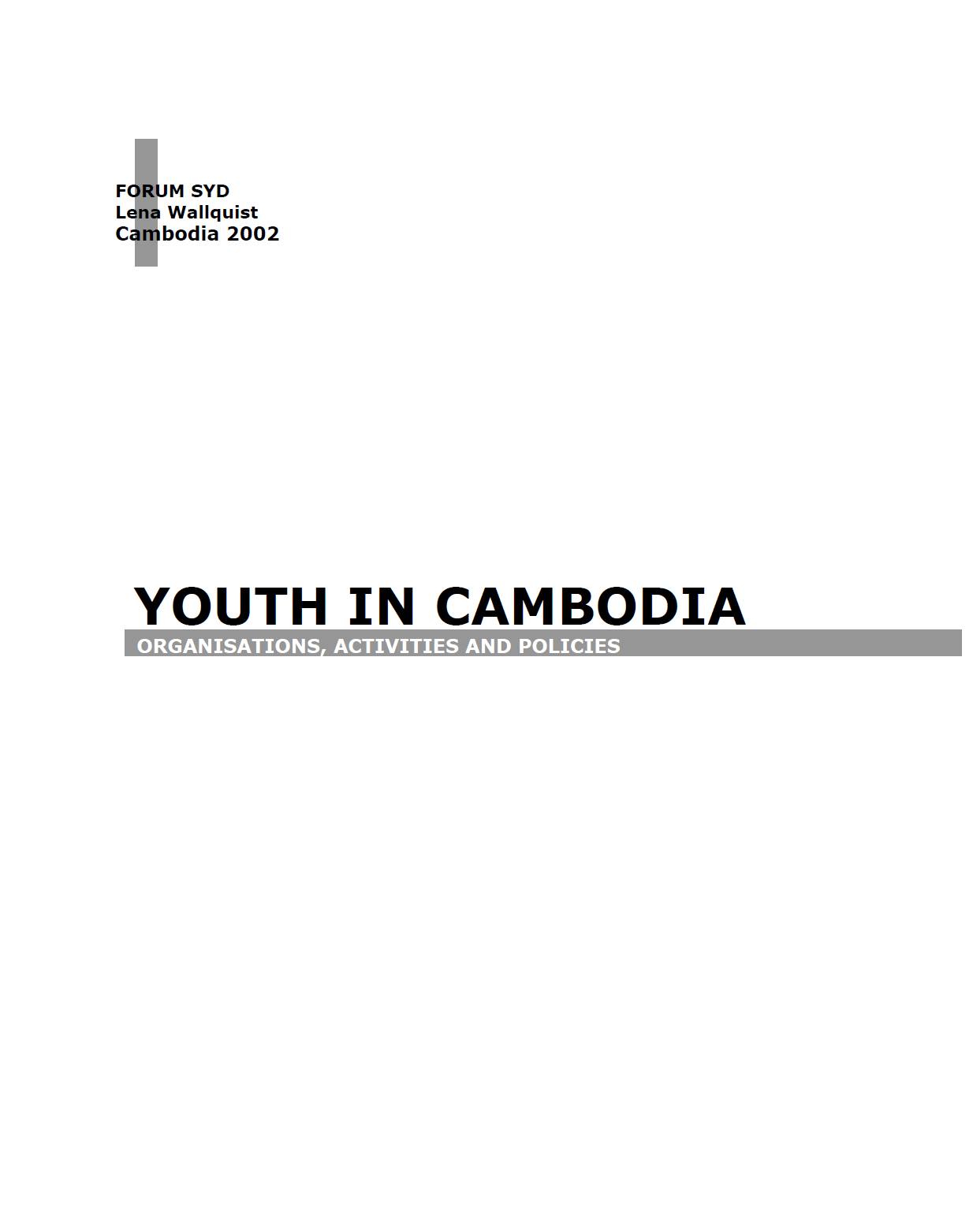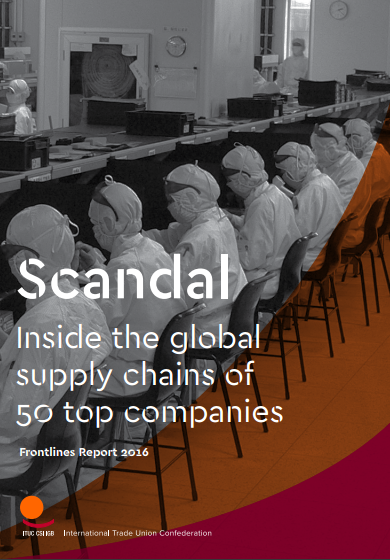
Global Wage Report 2014/15 – Wages and Income inequality
Publication Year: 2015 / Sources: International Labor Organization (ILO)The Global Wage Report 2014/15 presents both the latest trends in average wages and an analysis of the role of wages in income inequality. The first part of the report shows that global wage growth in recent years was driven by emerging and developing economies, where real wages have been rising since 2007 although wage growth slowed in 2013 compared to 2012. In developed economies, wages generally remained stagnant in 2012 and 2013, and in a number of countries wages remained below their 2007 level. These trends are a matter of concern.
Download: English | Khmer
ILO Policy Brief on Youth Employment in Cambodia
Publication Year: 2007 / Sources: International Labor Organization (ILO)Cambodia has a young population with 39 per cent of the population in 2004 below 15 years of age, down from 43 per cent in 1998. By 2004 the dependency ratio showing the children and elderly as a percentage of the intermediate group was 74 per cent.1 Youth aged 15–24 represented 22 percent of the population that year. Large numbers of young people are entering
the labour force as a result of a baby boom in the 1980s. Measures must be taken to ensure that youth do not add to underemployment in the countryside or lead to higher rates of urban unemployment but instead contribute to growth and development through productive employment.

Youth in Cambodia
Publication Year: 2002 / Sources: Forum Syd CambodiaThis report focuses on youth as a specific group. There is no legal definition for youth (nor for children or adults) in Cambodia, but the responsible Department under Ministry of Education, Youth and Sports defines youth as people between 14 and 30 years old. The aim of the study is to map out youth organisations and activities in Cambodia. It also provides some information regarding the general situation for young Cambodians and youth policy from the Government and the major donor agencies.
Download: English | Khmer
Human Trafficking Vulnerabilities in ASIA: A Study on Forced Marriage Between Cambodia and China
Publication Year: 2016 / Sources: United Nations Action for Cooperation against Trafficking in Persons (UN-ACT)Human Trafficking Vulnerabilities in ASIA:
A Study on Forced Marriage Between Cambodia and China
This report examines patterns of forced marriage in the context of broader migratory flows between Cambodia and China. It primarily draws on the accounts of 42 Cambodian women who experienced conditions of forced marriage, with interviews having taken place in both countries. Key informants from government and non-government stakeholders in Cambodia and China were consulted as well.
The objective has been to analyze recruitment, brokering, transportation and exploitation patterns as well as the links between these; to determine service needs amongst Cambodians trafficked to China for forced marriage, in China, during the repatriation process and upon return to Cambodia; as well as to identify opportunities for interventions to prevent forced marriages from occurring and to extend protective services to those in need, at both policy and programming levels.

Statement by the United Nations Special Rapporteur on the situation of human rights in Cambodia
Publication Year: 2016 / Sources: Professor Rhona Smith - United Nations Human Rights CouncilThe United Nations Special Rapporteur on the situation of human rights in Cambodia, Rhona Smith, called on the Cambodian authorities to further strengthen the protection of women and indigenous peoples’ rights in the country.
Download: English | Khmer
Legal Analysis: Sexual Harassment in Cambodia
Publication Year: 2015 / Sources: CARE CambodiaIn Cambodia, women and girls continue to be subjected to physical, emotional, sexual and economic violence, cutting across all divisions of income, culture and class in their daily public and private spheres. The study aims to conduct a detailed analysis of Sexual Harassment (SH) Gender Based Violence (GBV) measures through Cambodia’s labour, domestic violence, criminal legal and policy frameworks.
Download: English | Khmer
Literature Review: Sexual and Reproductive Health and Rights of Migrant Garment Factory Workers in Cambodia
Publication Year: 2014 / Sources: The United Nations Population Fund (UNFPA)In Cambodia, there are a signi cant number of migrant factory workers, and most of them are female adolescents and youth, living around Phnom Penh. us there is a need to support and respond to their health needs, particularly their sexual and reproductive health and rights. However, very little is known at the national level about the health status and needs of this group.
Download: English | Khmer
Scandal Inside the Global Supply Chains of 50 Top Companies
Publication Year: 2016 / Sources: International Trade Union ConfederationWorking people pay the price of the scandal – slavery, informal work, precarious short-term contracts, low wages, unsafe work and dangerous chemicals, forced overtime, attacks by governments on labour laws and social protection, inequality – it’s all part of a great global scandal that is today driven by corporate greed with an eternal quest for profit and shareholder value. In this report there is also the testimony from Cambodia, low wages workers in global supply chains, and other countries.
Download: English | Khmer
“Work Faster or Get Out”: Labor Rights Abuses in Cambodia’s Garment Industry
Publication Year: 2015 / Sources: Human Rights WatchWorkers in Cambodia’s garment factories—frequently producing name-brand clothing sold mainly in the United States, the European Union, and Canada—often experience discriminatory and exploitative labor conditions. The combination of short-term contracts that make it easier to fire and control workers, poor government labor inspection and enforcement, and aggressive tactics against independent unions make it difficult for workers, the vast majority of whom are young women, to assert their rights.
Download: English | Khmer
Interwoven: How the Better Work Program Improves Job and Life Quality in the Apparel Sector
Publication Year: 2015 / Sources: World Bank GroupFollowing decades of civil strife, Cambodia embarked on an ambitious market-oriented reform program. Cambodia was not a party to the global system of quotas known as the Multi-Fibre Arrangement (MFA), nor was it a member of the General Agreement on Tariffs and Trade (GATT). In this context, the government took steps to transform the state-owned apparel plants into exporters and foreign investment began to flow into Cambodia.
Download: English | Khmer